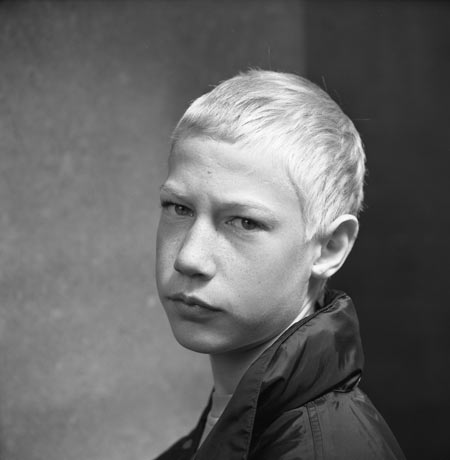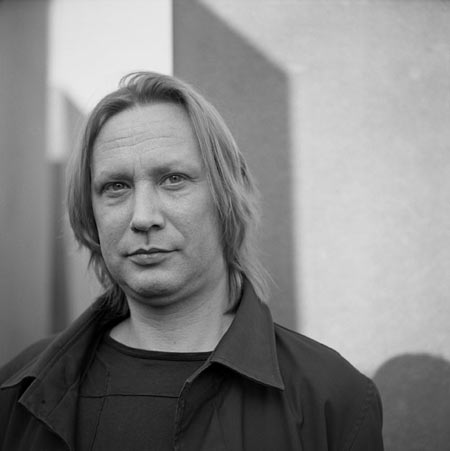A Conversation with Robert Lyons

Throughout his career as a photographer, Robert Lyons has covered a wide variety of subject matters, and he has been teaching photography in Berlin for a while. When I moved to Northampton he got in touch with me, since he just re-located back to Western Massachusetts himself (that’s the commute to Berlin!). Given his background and his exposure to both the US and the German photography scene, of course I had to ask him whether he’d be up for a conversation for the blog, and I’m very glad he agreed to it.
Jörg Colberg: You spent a lot of time working in Africa. How did you get interested in Africa?
Robert Lyons: My initial interest in Africa began with Egypt. I was intrigued about the people, culture and rituals from a young age. I think this was due to the frequent trips my father took with me to the Boston MFA, where we often spent time in the antiquities rooms.
JC: … and then how did it take off from there?
RL: Well, you know, after the early trips I wanted to experience more, to explore a bit. The reception of the people to me and their embracing me, allowing to make images, was intoxicating.

JC: Your project Intimate Enemy deals with the genocide in Rwanda. In the resulting book (see a review here), there are lots of portraits of survivors and perpetrators. How did you deal with all the issues around one of the most terrible genocides in history? Working on the project must have been quite draining I would think.
RL: The project in Rwanda was draining. So much so that it took me about three years after its completion to really move forward with my work. I had spent considerable time on the African continent, and nothing prepared me for the overwhelming feelings that resulted from my time in Rwanda. I wanted to try and examine the genocide in a new manner with a visual vocabulary that was different, one that moved away from the type of cliché images often encountered in that situation and moved more towards the conceptual ideas of identity, victimization and loss of personal humanity.
JC: How did you move towards that different visual vocabulary? And did you find people eager to contribute or did you have to deal with a lot of resistance?
RL: The Rwanda project and ensuing work was a change for me and with it I met resistance in all aspects. First, it took almost a year to get permission. Secondly, there was little interest in the USA for such a project. My visual vocabulary changed in that for the first time in almost 20 years I worked again in b/w, and since that project I have continued to work in both b/w and color.

JC: Your new project Mahnmal deals with another genocide, the Holocaust, and with remembrance. How did you decide about this project? And what parallels does it have with the Rwanda project?
RL: After finishing the book design/concept for the Rwanda project I was working on some other projects and found myself re-locating to Berlin, and the city, well, was difficult for me to work in. I wanted to pare down and create some limits within which to work. When the Mahnmal opened, at first I was resistant to going to see it. Shortly after it opened I was bicycling through the city one day and I decided I should stop to see it. Somehow I was struck immediately by the site, not by beauty or formalism, but rather that this site might generate certain emotional states in people. And I recalled all the memorial sites I visited in Rwanda, which always had skulls, bones and remains of people. Somewhere the Vietnam Memorial came into my head. I wondered why we make these sites, who do they benefit, whose conscience is eased, what exactly is the role of a “memorial”… And so it began…

JC: To change the subject a little, you teach at Berlin’s Ostkreuzschule. There is this stereotype that German photography is sterile and cold. I have the feeling, though, that at least part of the reason why so many people think that is because of the predominance of one German photo school, the one from Düsseldorf. Given you have been exposed to much more German photography than most people who don’t live there how would you characterize German photography? Is it really so different from, say, what you find in the US?
RL: Yes, German photography is different from what one finds in the USA, at least in the method of schooling and consequently the work itself. There is a long tradition of both “documentary style” and also conceptual thinking. I find often that the imagery is driven from the intellect and less from one’s emotional center. In the USA it is a bit different. I guess often I find the German work we are exposed to calculated and cool, though after a lot of looking at German work I realize that other strands exist, but… Well, you know, the German mind can often be categorical and this has in recent years been exploited. I mean August Sander is one of my favorite photographers, and I find his work highly charged emotionally, and that the portraits are somehow a collaboration between the subject, photographer and the moment… All intuited in a brief time… It is not just about archetypal categorizations of people, which is I have heard it portrayed among some groups in Germany.
JC: Apart from making contemporary photography cold, Germans are often also blamed for the inflation in print sizes. It seems everybody now wants to see their photos really large. Having large photos makes sense when you aim at creating photography that does live in the realm of large paintings - I think Andreas Gursky or Beate Gütschow work that way. But I often have the feeling that many photos are simply printed too large. What do you think? How does one determine the best print size?
RL: This is a hard question. Indeed everyone nowadays make large color prints with the white paper of the print acting as a passe partout. It is so prevalent that it has become for me very boring. It seems to take away the intimacy of the imagery and creates an overblown scale that often does not work for the image. I think that that is the “marketplace” of contemporary art. But if one wants to see how images can live with people in their environment then this scale often does not work, because most people do not have spaces to accommodate work that size, and the work becomes “wallpaper”. So I think it is tricky. I mean in the 70’s and 80’ the idea was that all the pieces in a show were the “same size”, just like big prints now that lead to boring presentations. I believe the artist should be encouraged to work in a variety of sizes that fit the work. Not s, m, l, and xl - that is too much like going to the supermarket…

JC: What do you tell your students how to pick the size that fits the work? How does one find that size?
RL: I encourage my students to be adventurous, to try all sorts of things, depending upon how each one is currently working. This seems to be a moment in time when people explore less. Often they are more concerned with “making it”, and I think that is silly. I feel they need to find out about how they wish to use the images. The form often follows content, not the other way around.
JC: I’m often wondering what “digital” really brings to the table. If digital photography was just a different way to take photos I am not sure it’d really be worth all the discussion (unless you are a camera maker and want to sell gear, of course). I think it gets more interesting when one thinks about what digital technologies might add to photography. What are your thoughts on this issue?
RL: Digital is another tool for an artist. While I have apprehensions about digital capture I think in terms of print making, books etc. this tool is wonderful. But it is different from analog… the look and feel… Rather than trying to bring it more in line I am interested in its inherent strengths and mining those strengths. There is a special magic about the wet process of photography, seeing a print come up in the tray, or developing film by inspection. But for the generation that has only known type C prints from automatic machines it seems that digital is an obvious jump. That being said I think that the processes in the darkroom are akin to a meditative experience, or maybe a more appropriate analogy is the experiences described in “Zen and the Art of Archery”.

JC: With the processes being very clearly different, in the end, regardless of whether one works in a darkroom or in front of a computer, the quality of the photos is what people will take away from a photographer’s work. In a recent interview, Stephen Shore mentioned that selection/editing is one of the aspects of photography that’s becoming even more important with digital photography - is that something people are aware of? I often think that digital photography is basically just gadget-driven, with the more important aspects being completely ignored.
RL: Well, I guess the process - especially “digital capture” - is really where I think we are a bit lost. When you take an image digitally you often can edit it immediately. I mean how many times have you seen someone make the image, withdraw from the moment to view it on the small LCD monitor of the camera, and then say, “oh, it is not good, I delete it and try again”. While this can be good there exist for me two problems, the fact that the photographer is no longer in the “moment”, but has in some way withdrawn, and that the “mistakes”, which one might view later (even years later) and decide were worthy images, are already gone - deleted!
 By
By